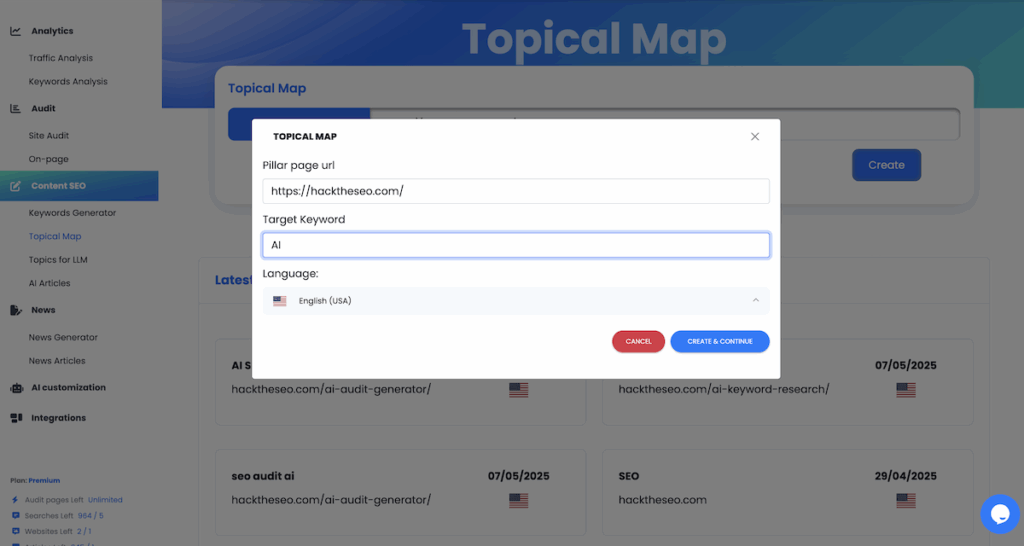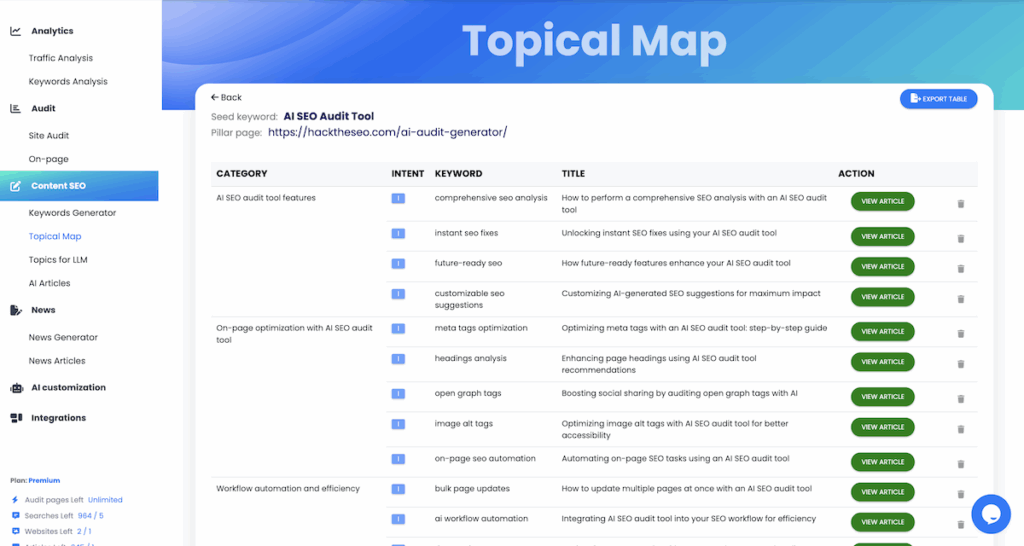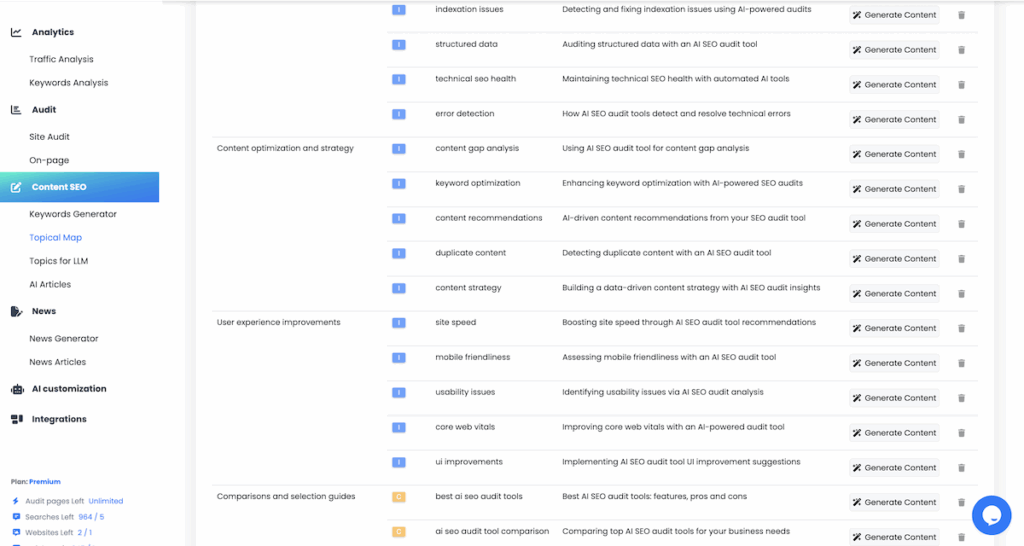The Topical Map feature helps you turn a single keyword or URL into a structured content hub. By analyzing semantic relationships, intent, and page context, it generates dozens of relevant article ideas grouped by topic clusters.
Why Use a Topical Map?
A Topical Map is a strategic content planning tool that groups semantically related topics around a central theme (your pillar page). It’s more than just keyword research — it’s the blueprint for building topical authority in Google’s eyes.
| Benefit | What it means for your site |
|---|---|
| Semantic coverage | You don’t just rank for one keyword — you cover all variations, synonyms, and subtopics around a theme. |
| Topical authority | Google rewards sites that demonstrate deep expertise. Publishing around 20–30 well-clustered pages sends a strong signal of relevance. |
| Internal linking made easy | Each suggested page is naturally linked to your pillar page and to sibling articles — perfect for silo structure. |
| Content roadmap | You instantly get a 3–6 month editorial plan, organized by topic, keyword, and search intent — no guesswork. |
| Faster AI content generation | Each keyword comes with a suggested article title, so you can generate SEO-optimized content in 1 click. |
A well-structured topical map increases your chances of ranking for dozens of keywords per article — not just one.
🚀 Quick-Start: Launch a Topical Map
- Go to Content SEO › Topical Map in the left-hand menu.
- Choose your input method:
- By keyword: enter a seed keyword to build from scratch.
- By URL: enter an existing or competitor page to reverse-engineer its content hub.
- Select the language (English, French, etc.).
- Click Create & Continue.

🧠 Semantic Clusters and Keyword Grouping
Hack the SEO automatically groups keywords by semantic category and intent, generating:
- Categories (e.g. “Content strategy”, “On-page optimization”, “UX improvements”)
- Keywords (rankable phrases detected via NLP + search data)
- Article titles (ready-to-use titles aligned with the keyword intent)
Each row corresponds to one future article idea you can launch instantly.

🔍 Understand Keyword Intent
Each suggested keyword is labeled with a specific intent, allowing you to match your article to the reader’s search mindset and position in the SEO funnel.
Each keyword is labeled with intent:
| Label | Type | Description |
|---|---|---|
| I | Informational | The user is looking to learn: guides, tutorials, definitions, educational articles. Ex: “how to use AI SEO tools”. |
| C | Commercial | The user is considering options: comparisons, pros & cons, product guides. Ex: “best AI SEO platforms”. |
| T | Transactional | The user is ready to take action: tool use cases, product benefits, service details. Ex: “buy SEO audit tool”. |
| N | Navigational | The user is looking for a specific brand or website. Ex: “Hack the SEO audit tool”. |
This lets you balance your content funnel with TOFU/MOFU/BOFU intent articles.

⚡ Generate Articles Instantly
- Click Generate Content to launch the article builder for that topic.
- You’ll be taken to the AI Article Writing screen with the keyword, title, and semantic cluster pre-filled.
- Edit the outline, tone, or length—then click Generate Article.
Articles are SEO-optimized, keyword-balanced, and ready to publish.
🎯 When to Use the Topical Map
- You want to dominate a niche by creating a complete content hub (e.g. all topics around “AI SEO audit”).
- You want to update or expand a pillar page (enter its URL to detect missing subtopics).
- You want to plan your content calendar with a smart, structured list of ideas.
❓ FAQ
- What’s the difference between keyword research and topical map?
Keyword research shows ranked phrases; the topical map builds article ideas around them in structured clusters. - How is this better than using ChatGPT?
The clustering logic is SEO-driven, based on SERP data and intent detection, not just general associations. - Can I export the list?
Yes. Click Export Table at the top right to get a CSV version of all topics, keywords, and titles.
📍 Next Steps
Once your topical map is built, generate each article with AI Content Writing, link them together around your pillar page, and watch your SEO grow.
